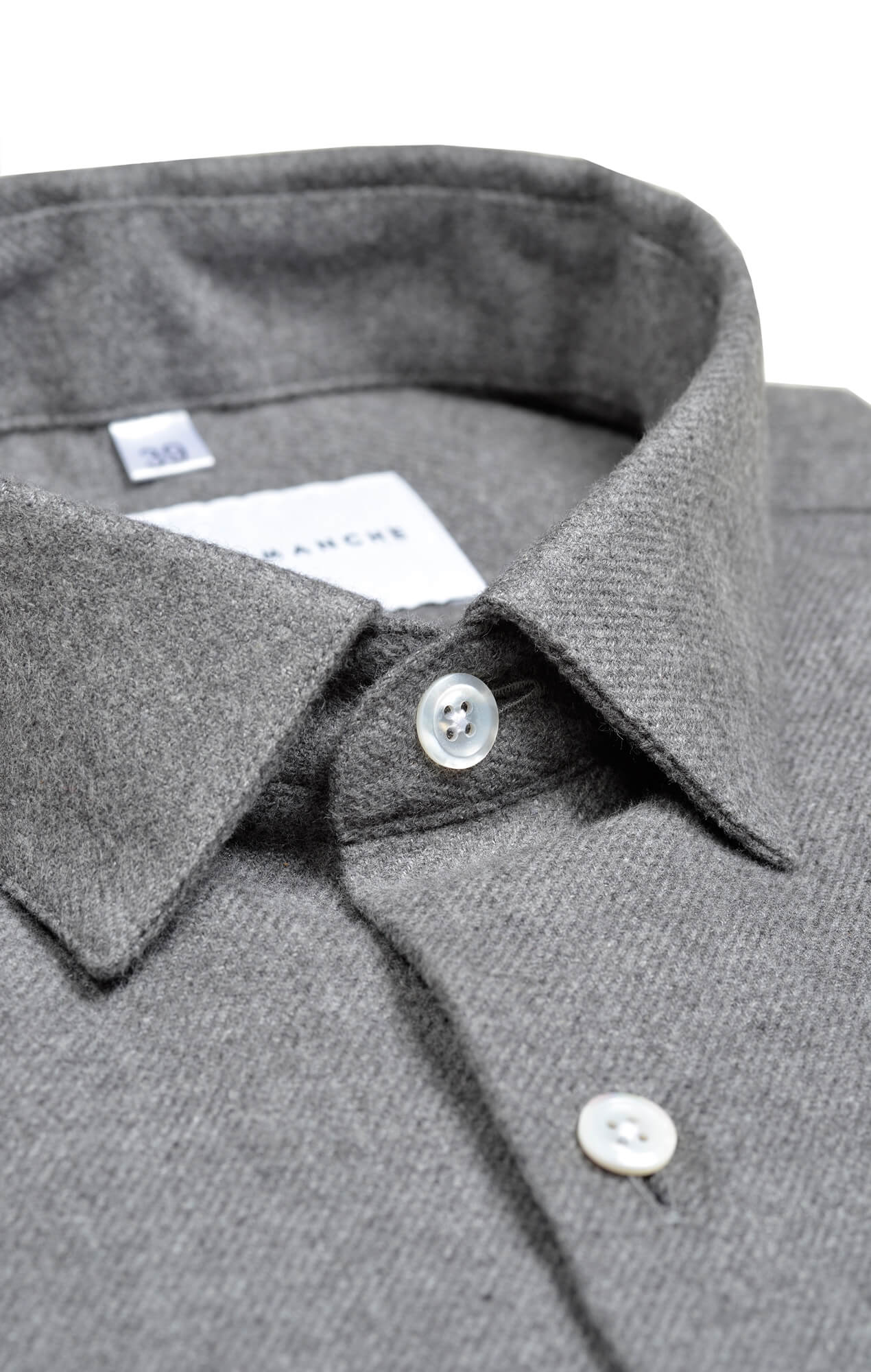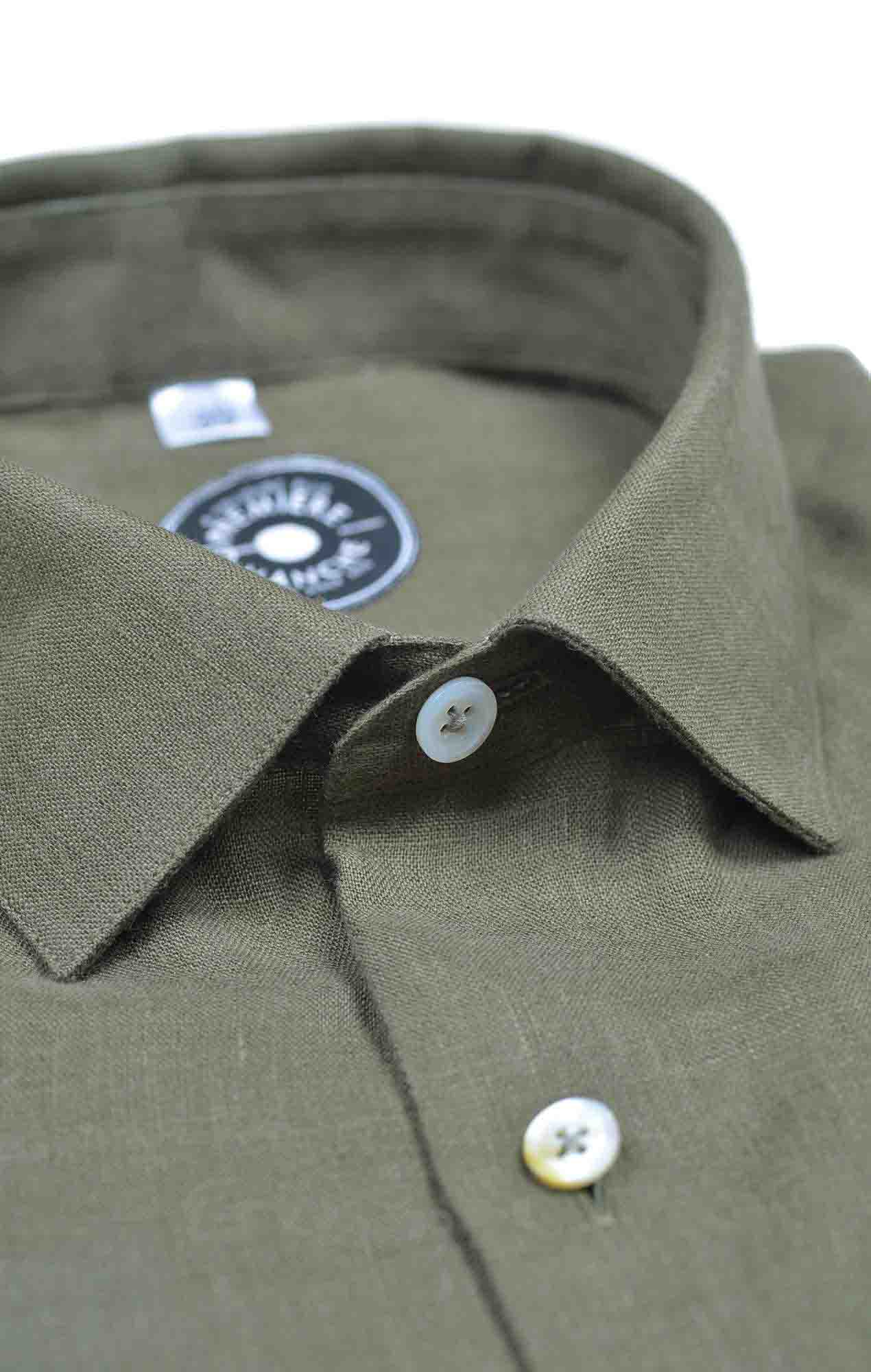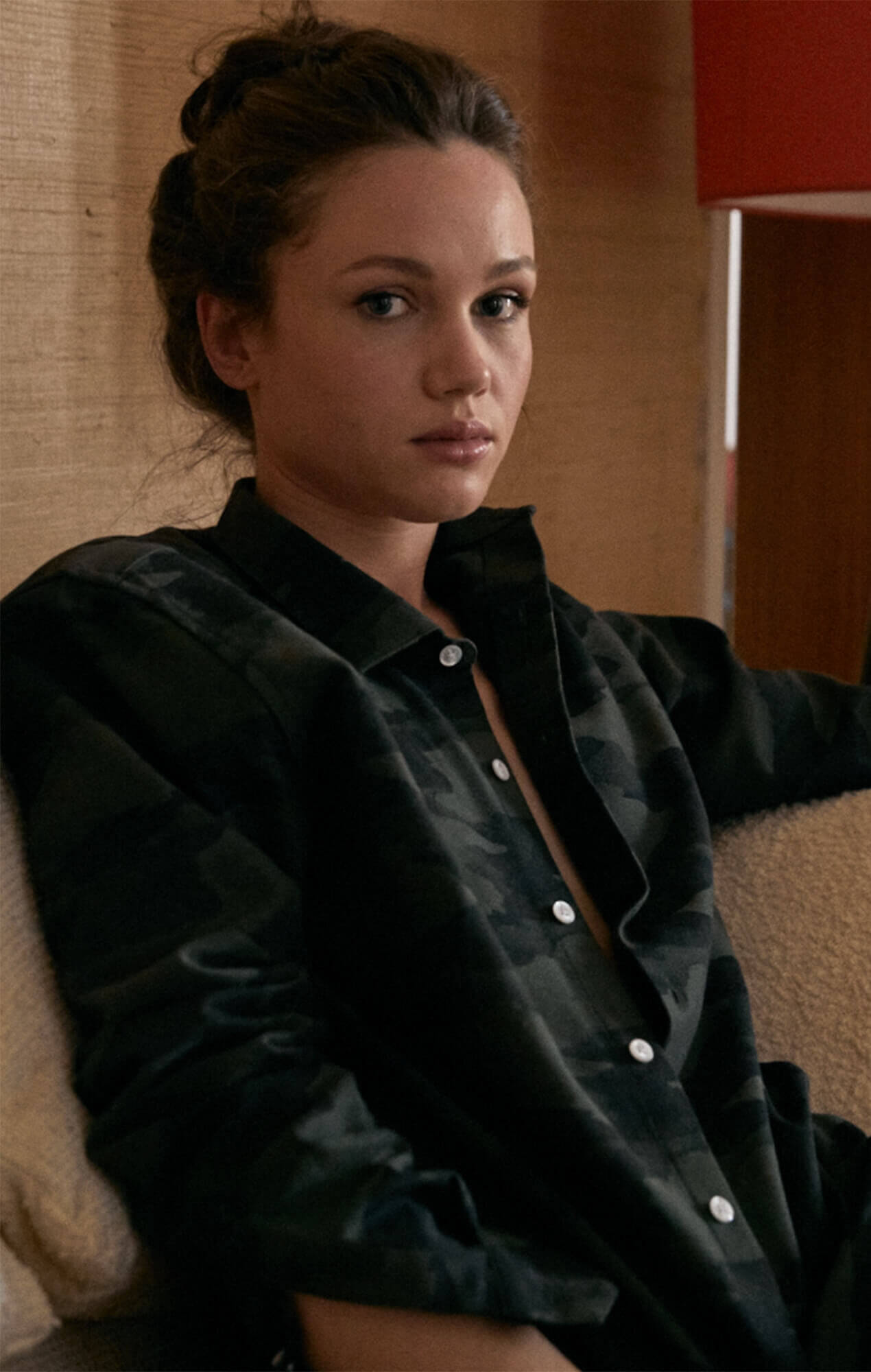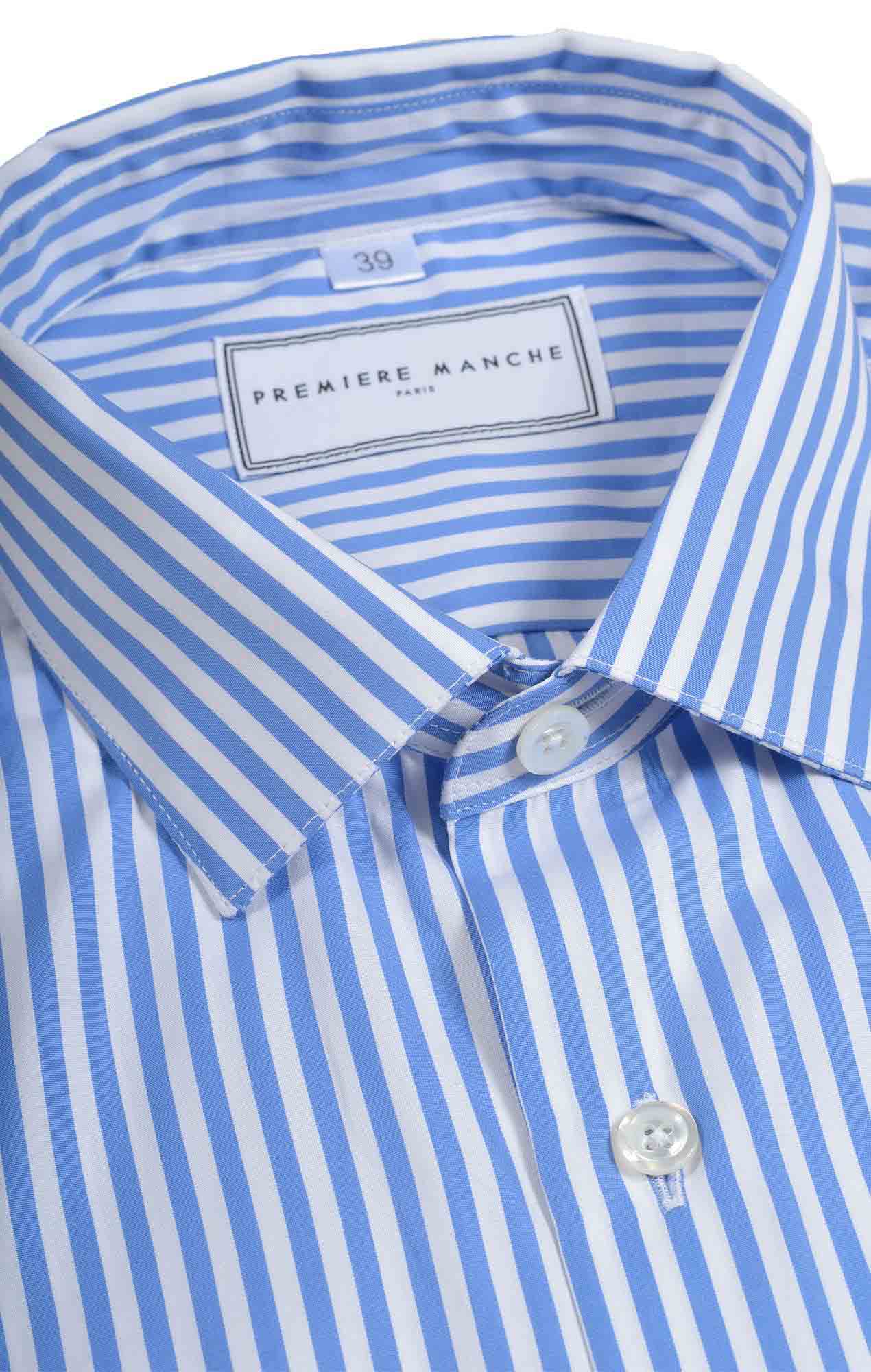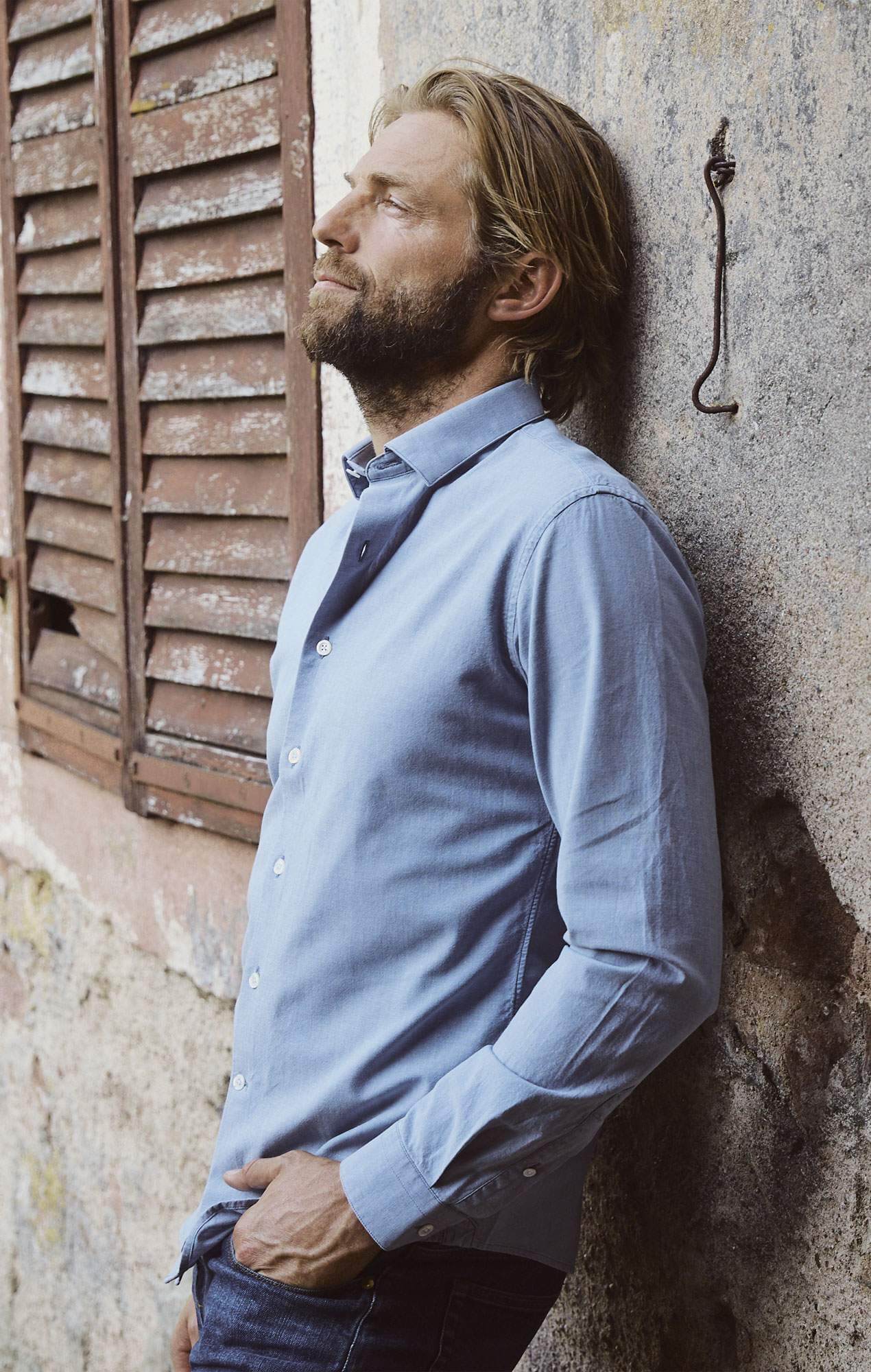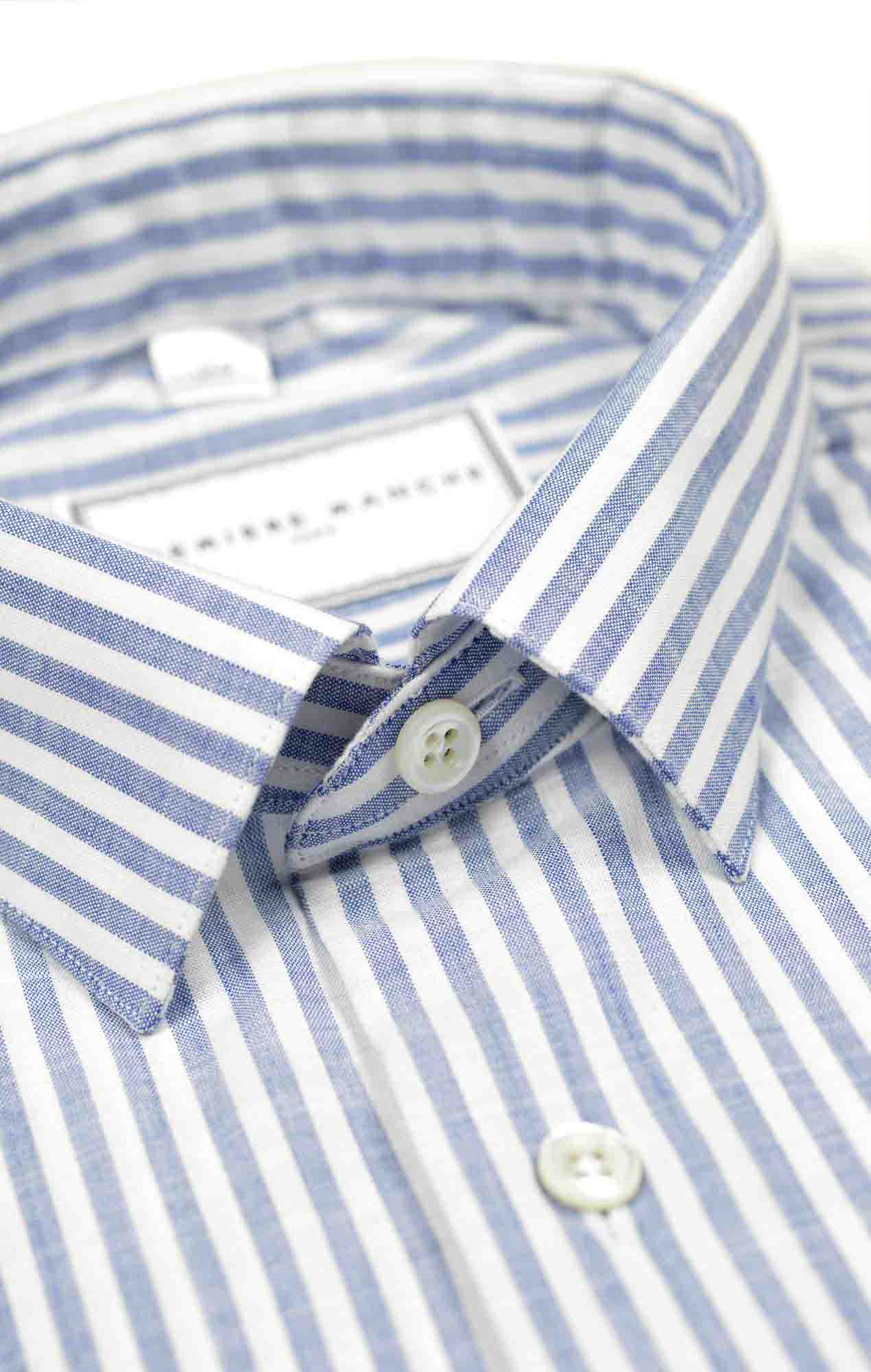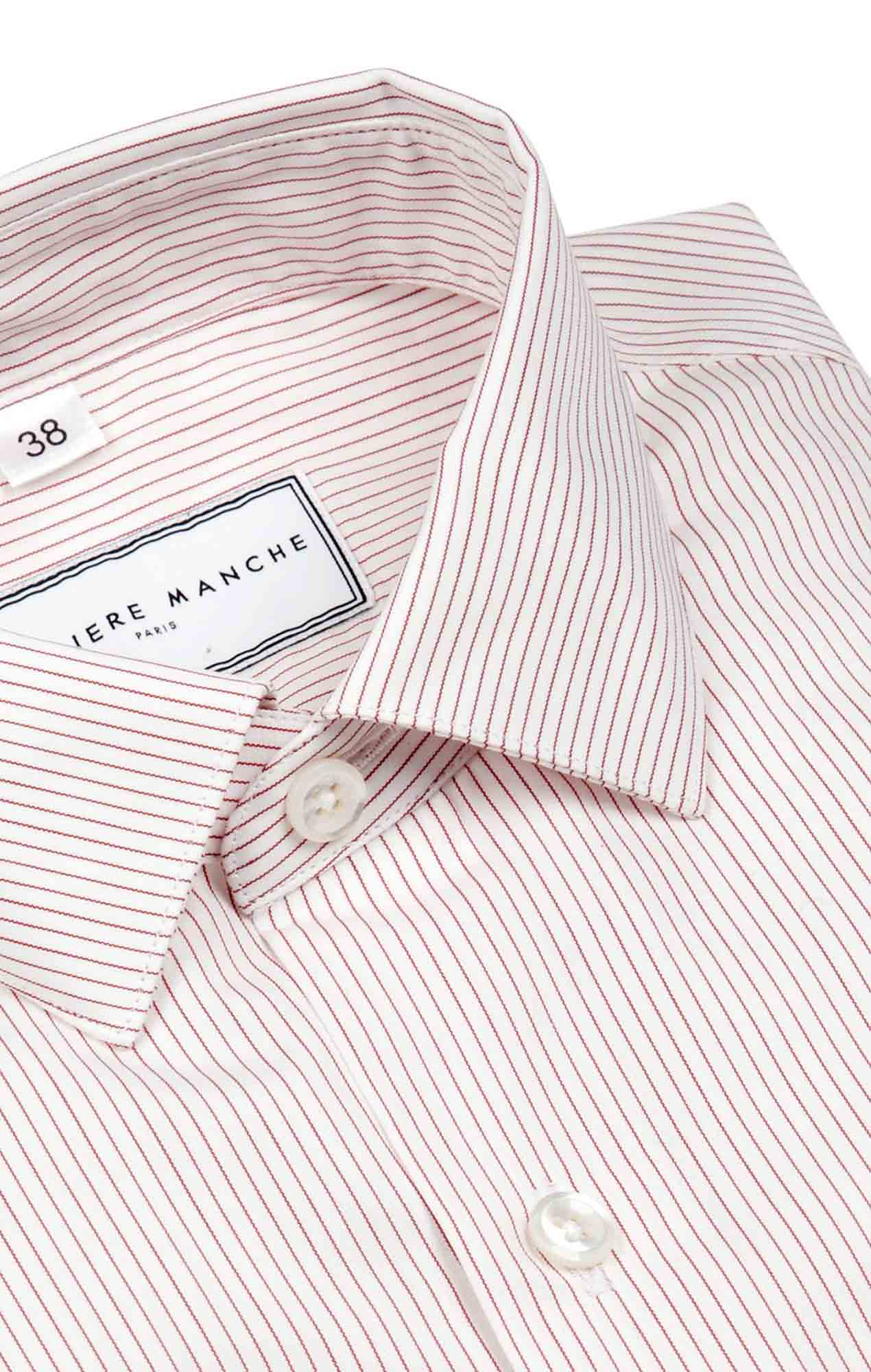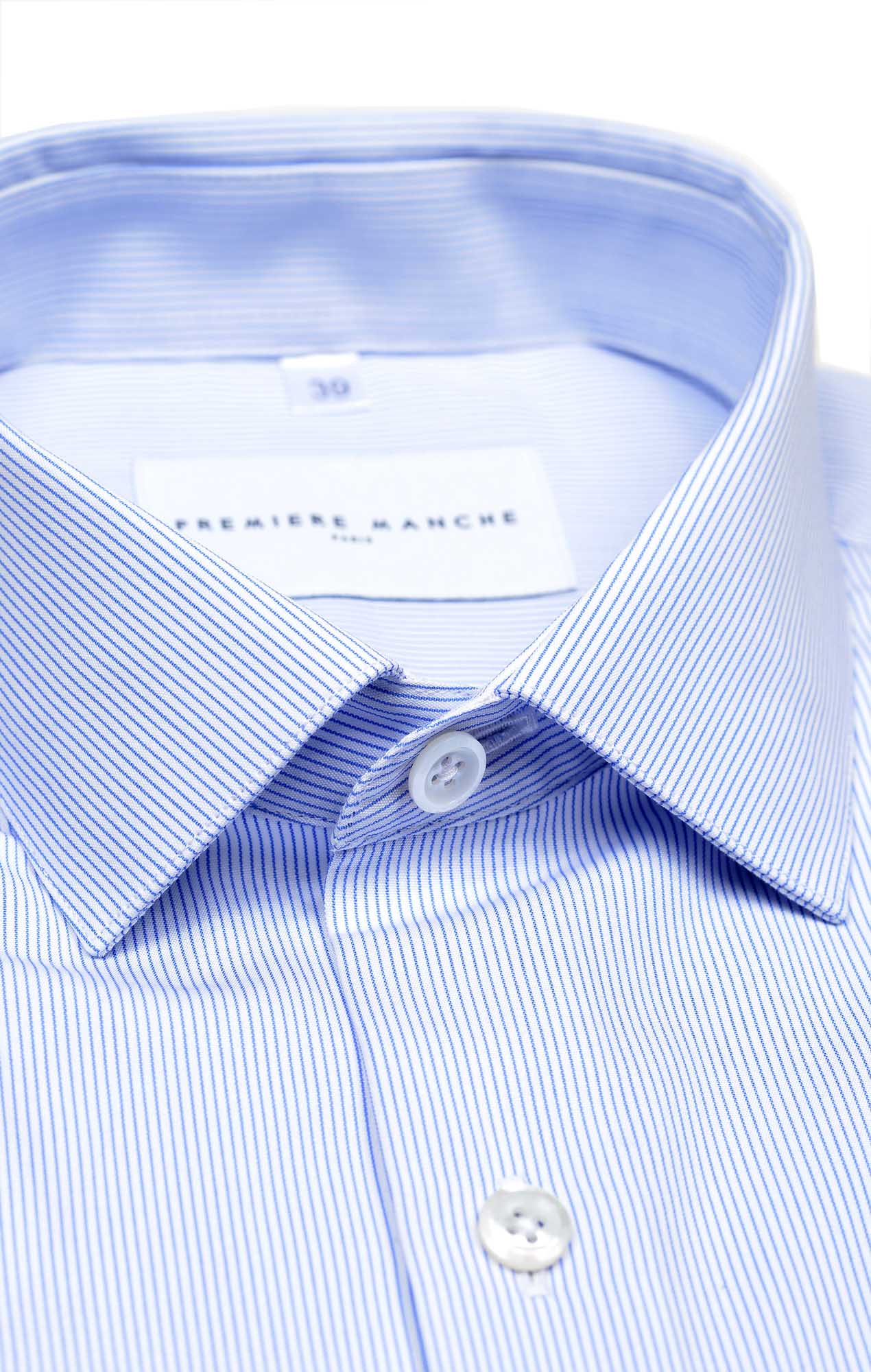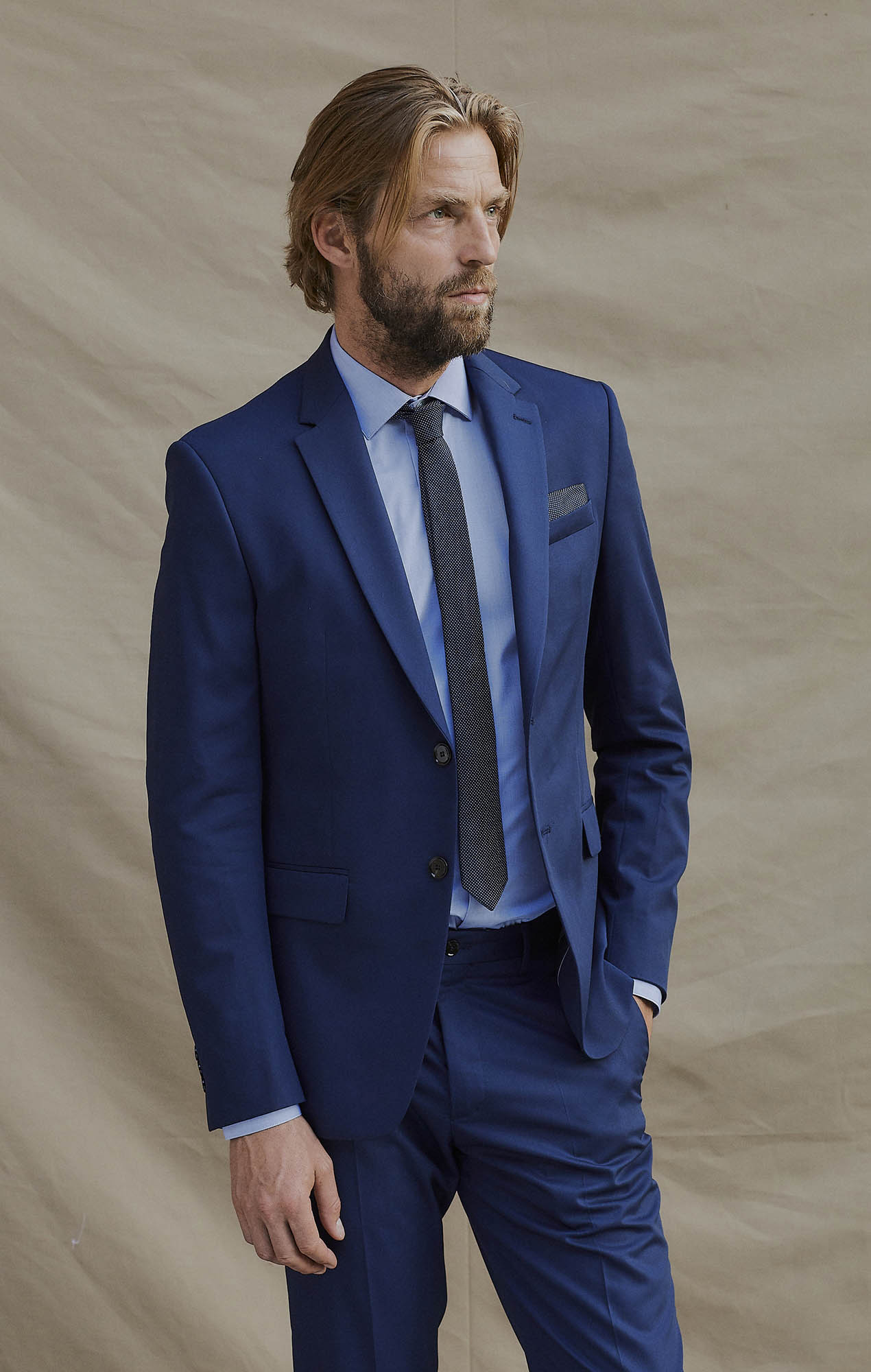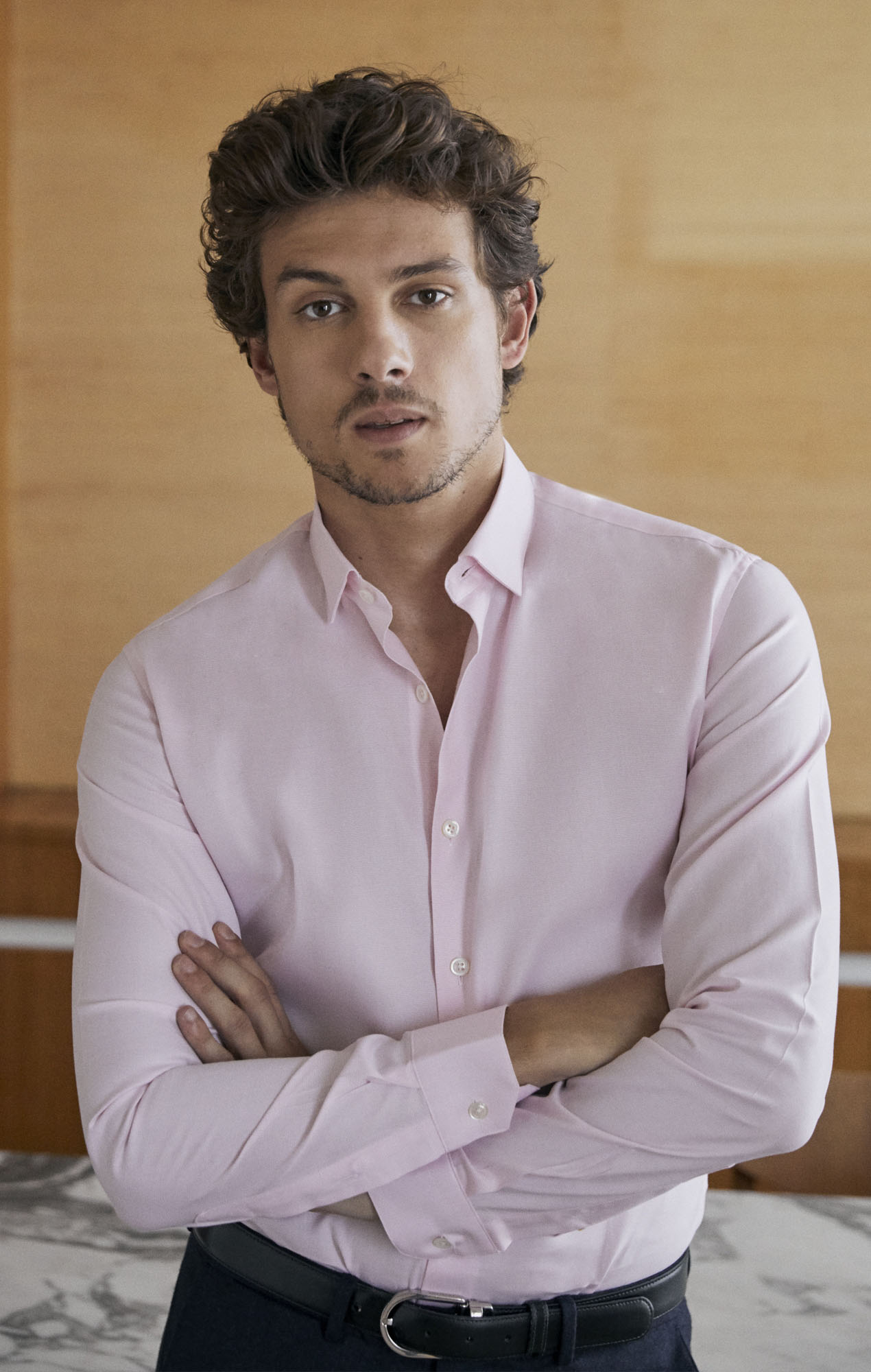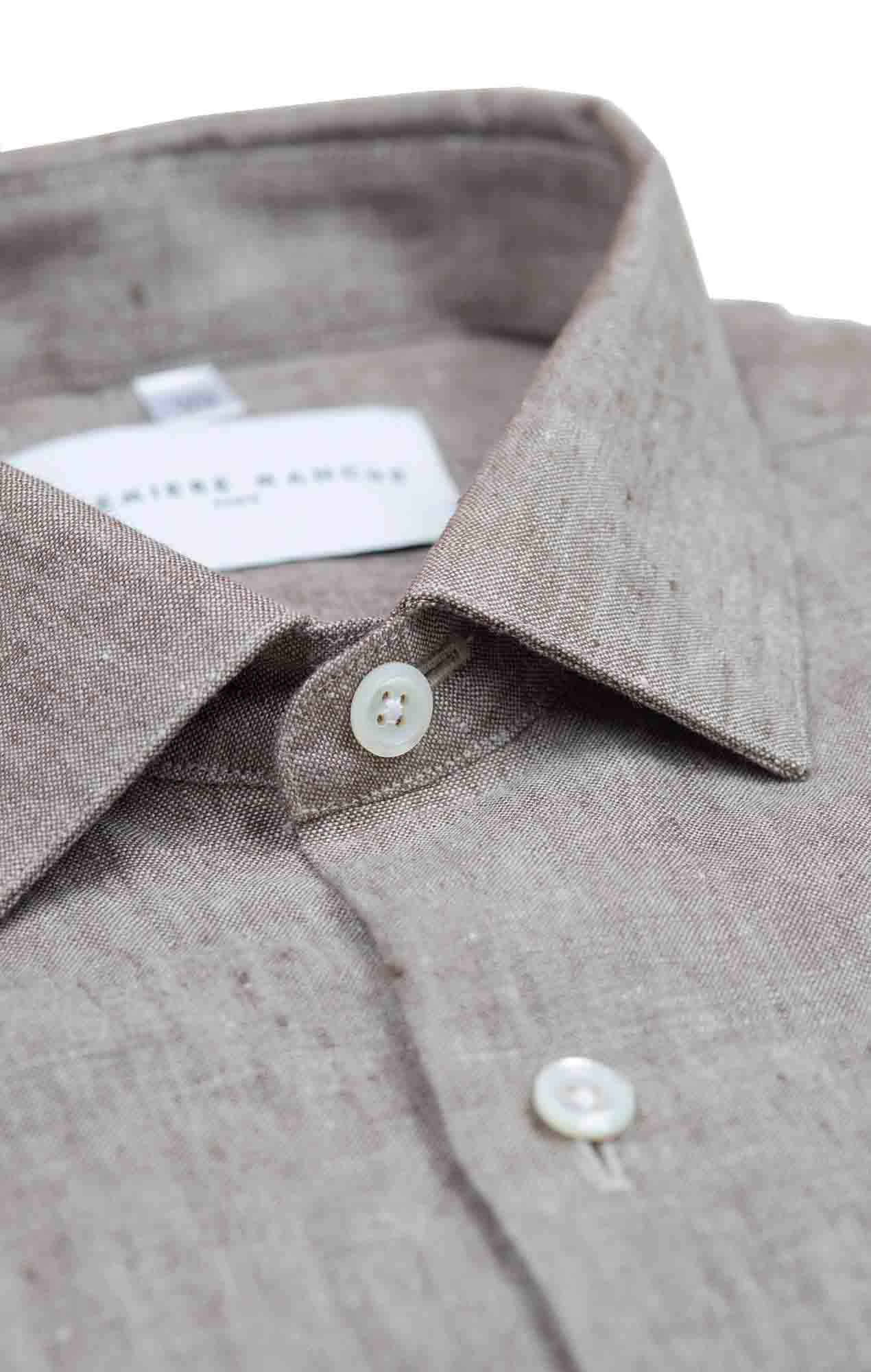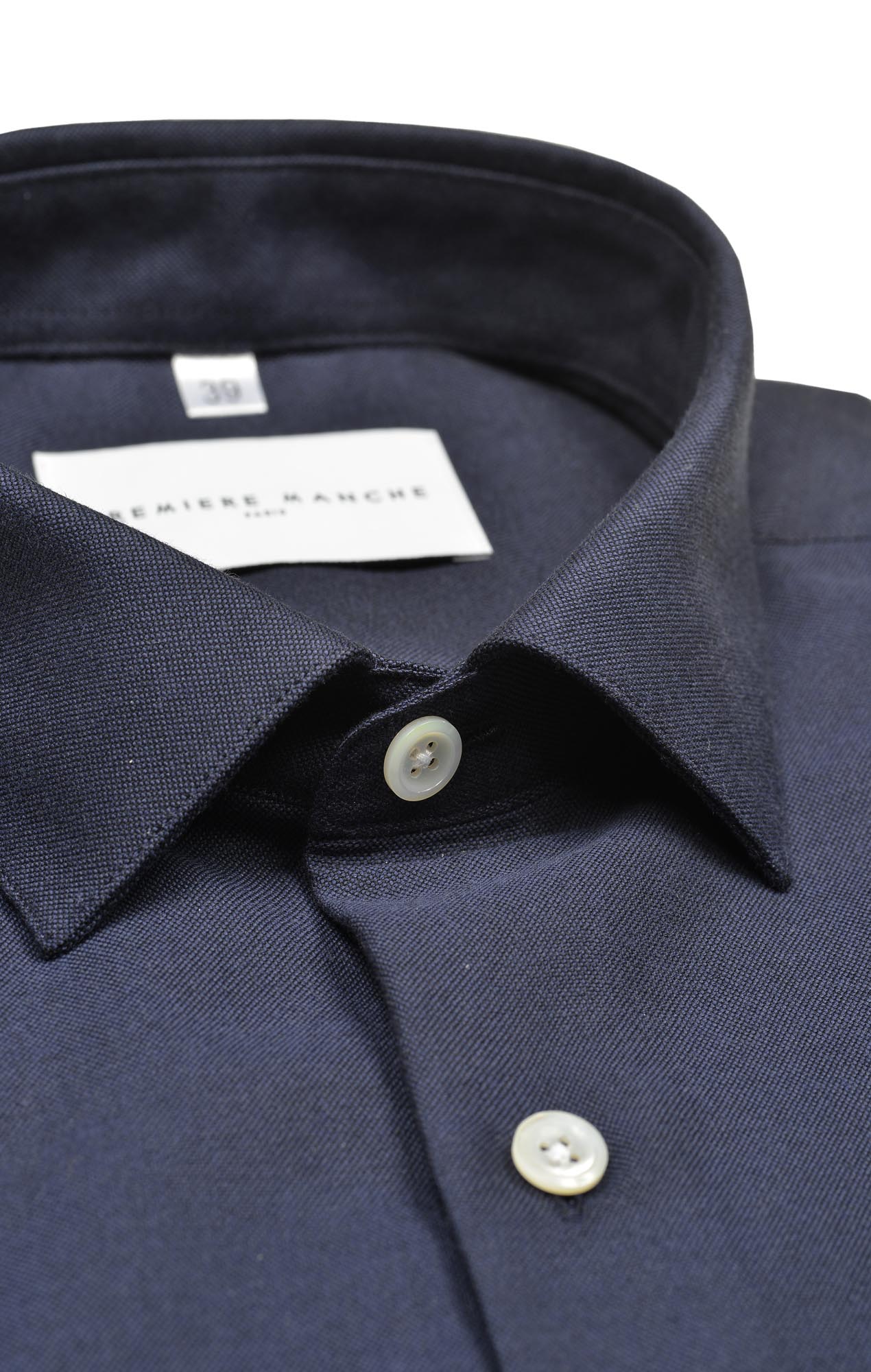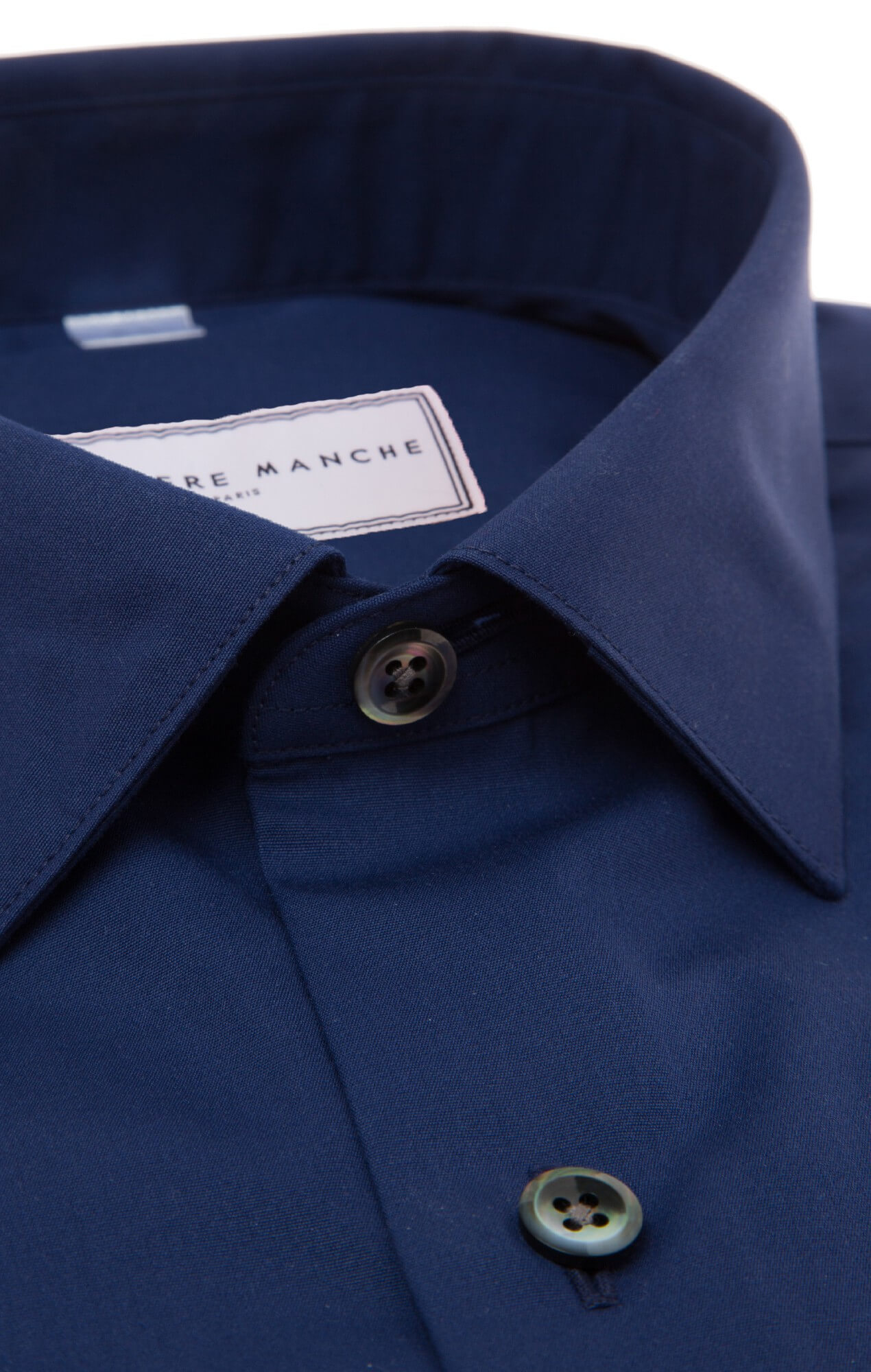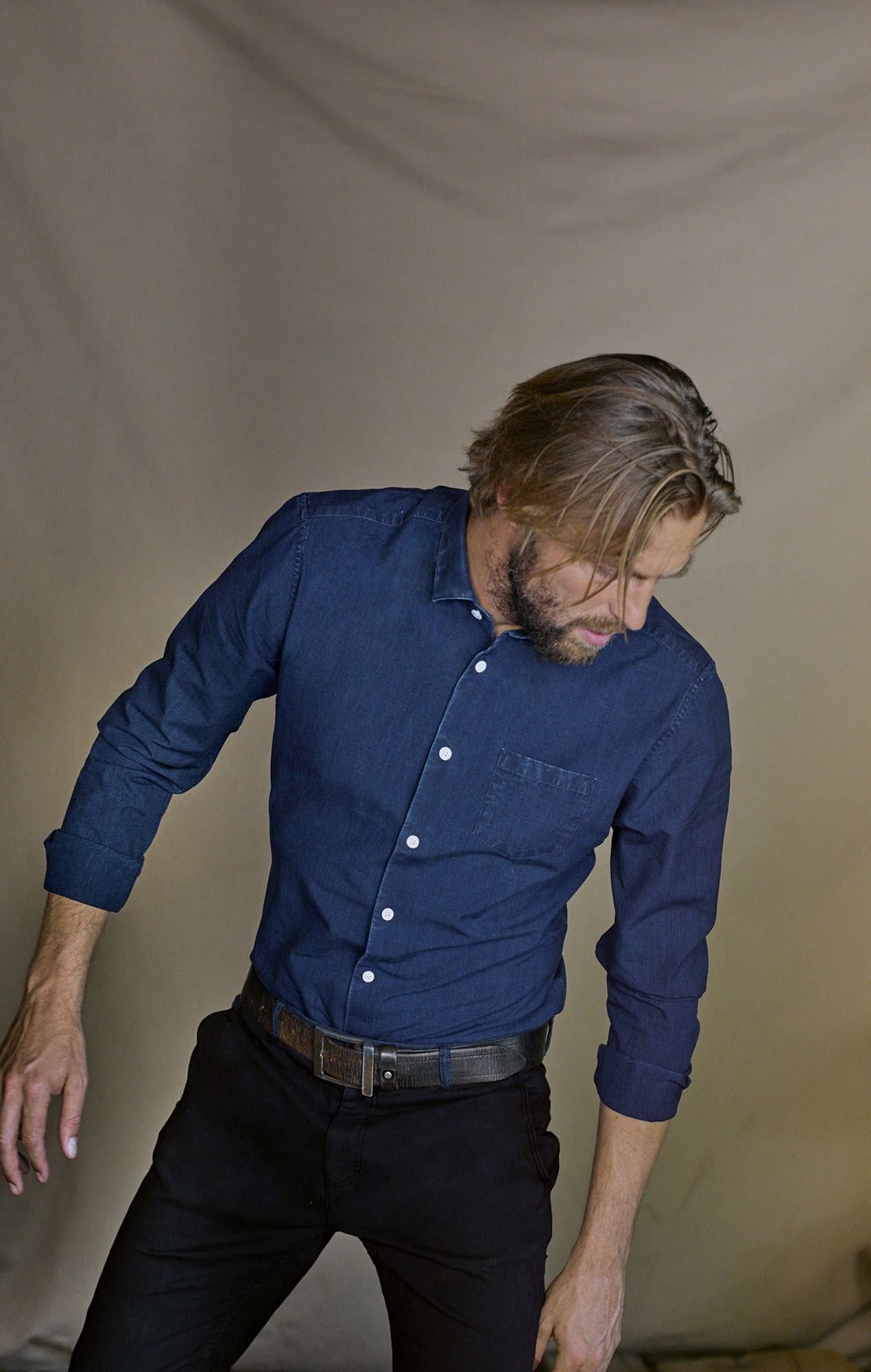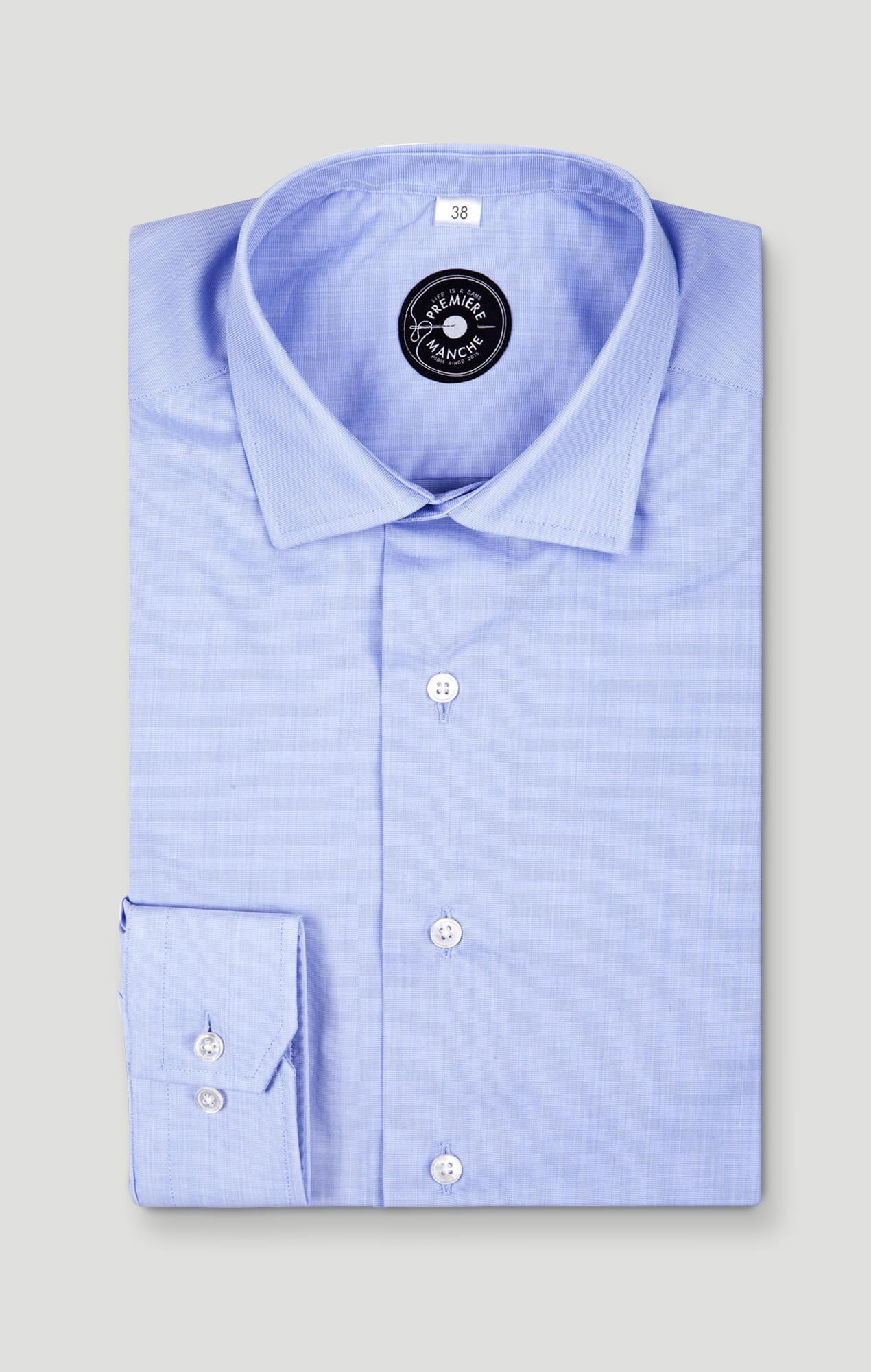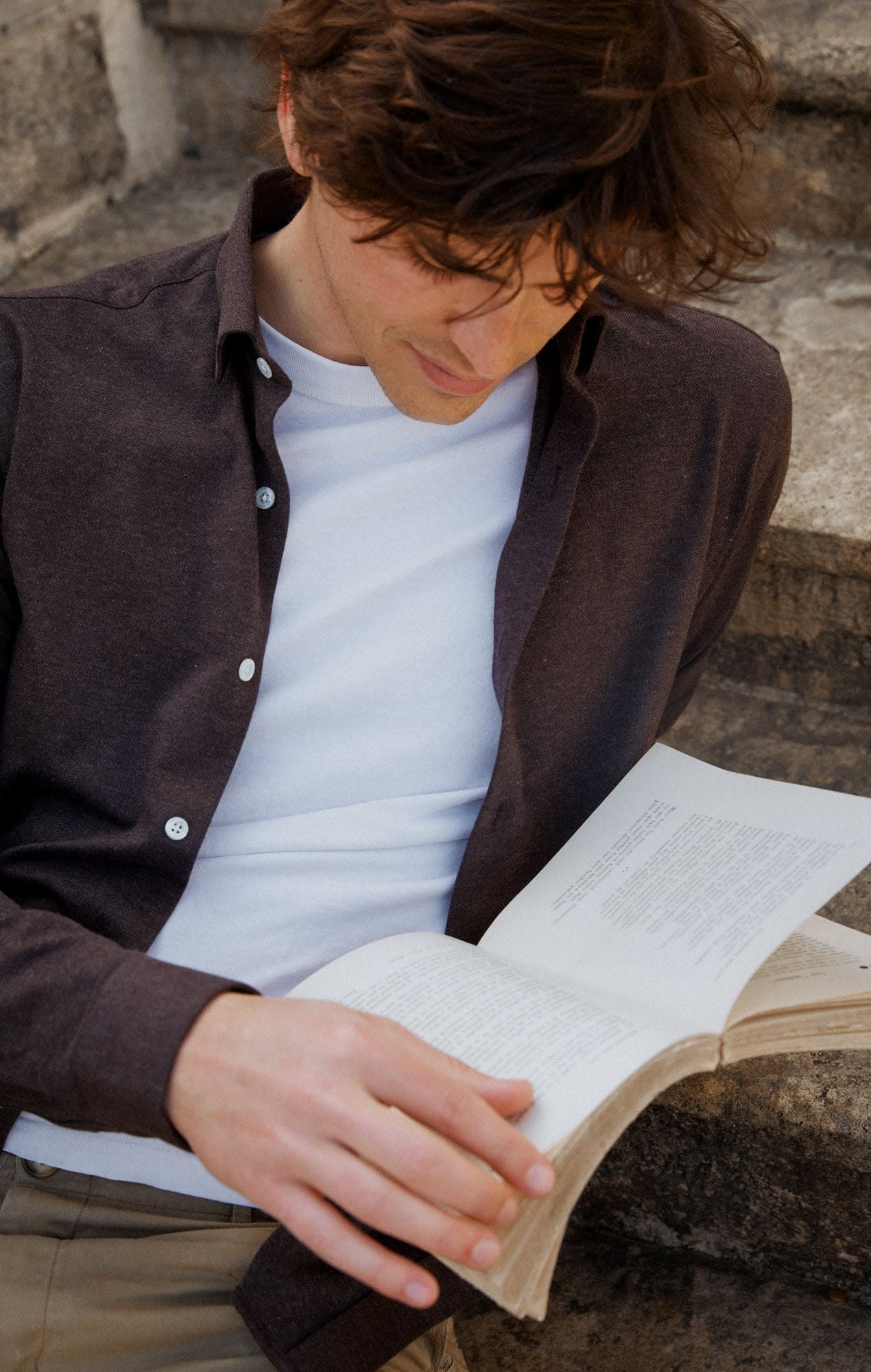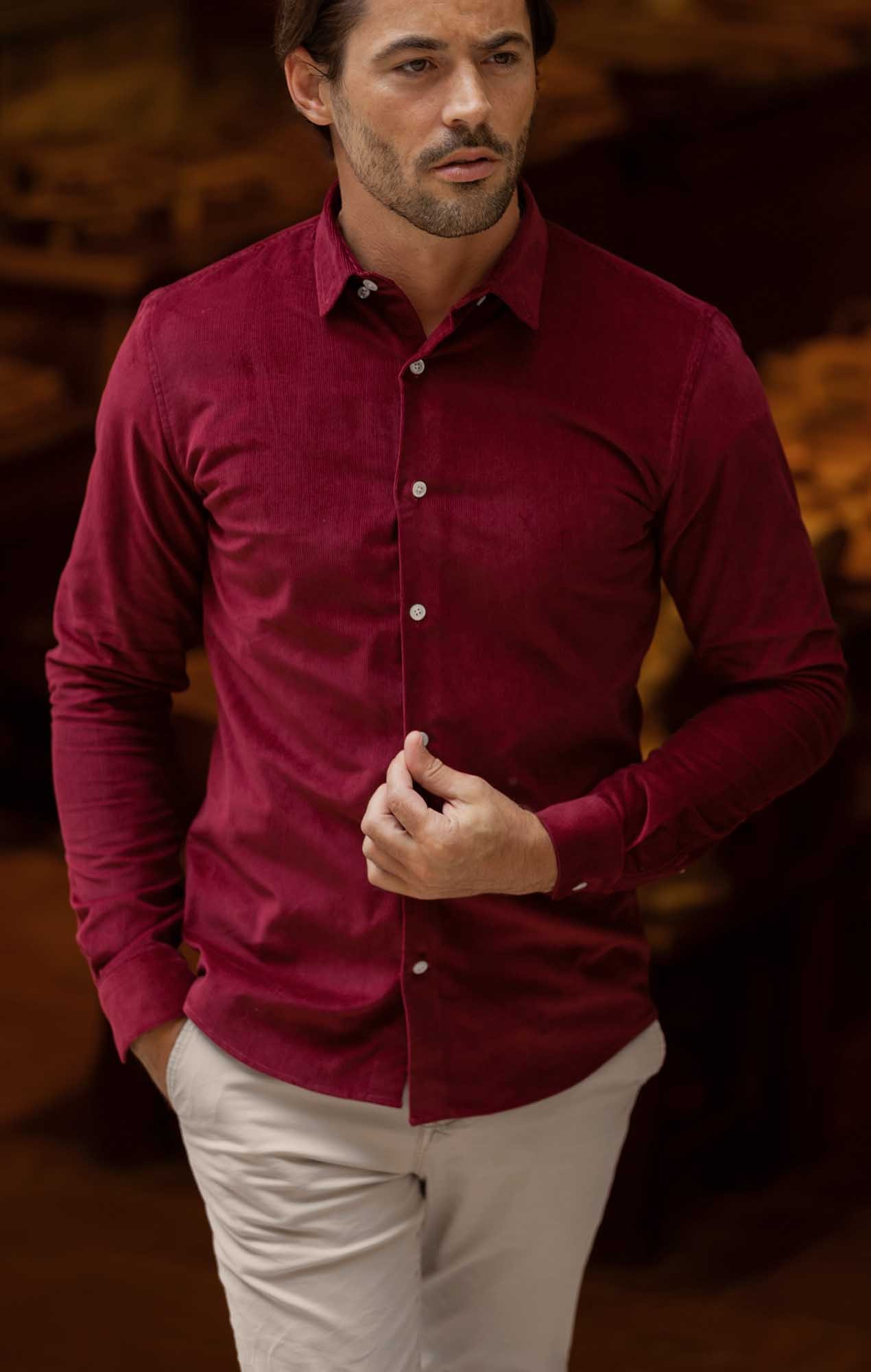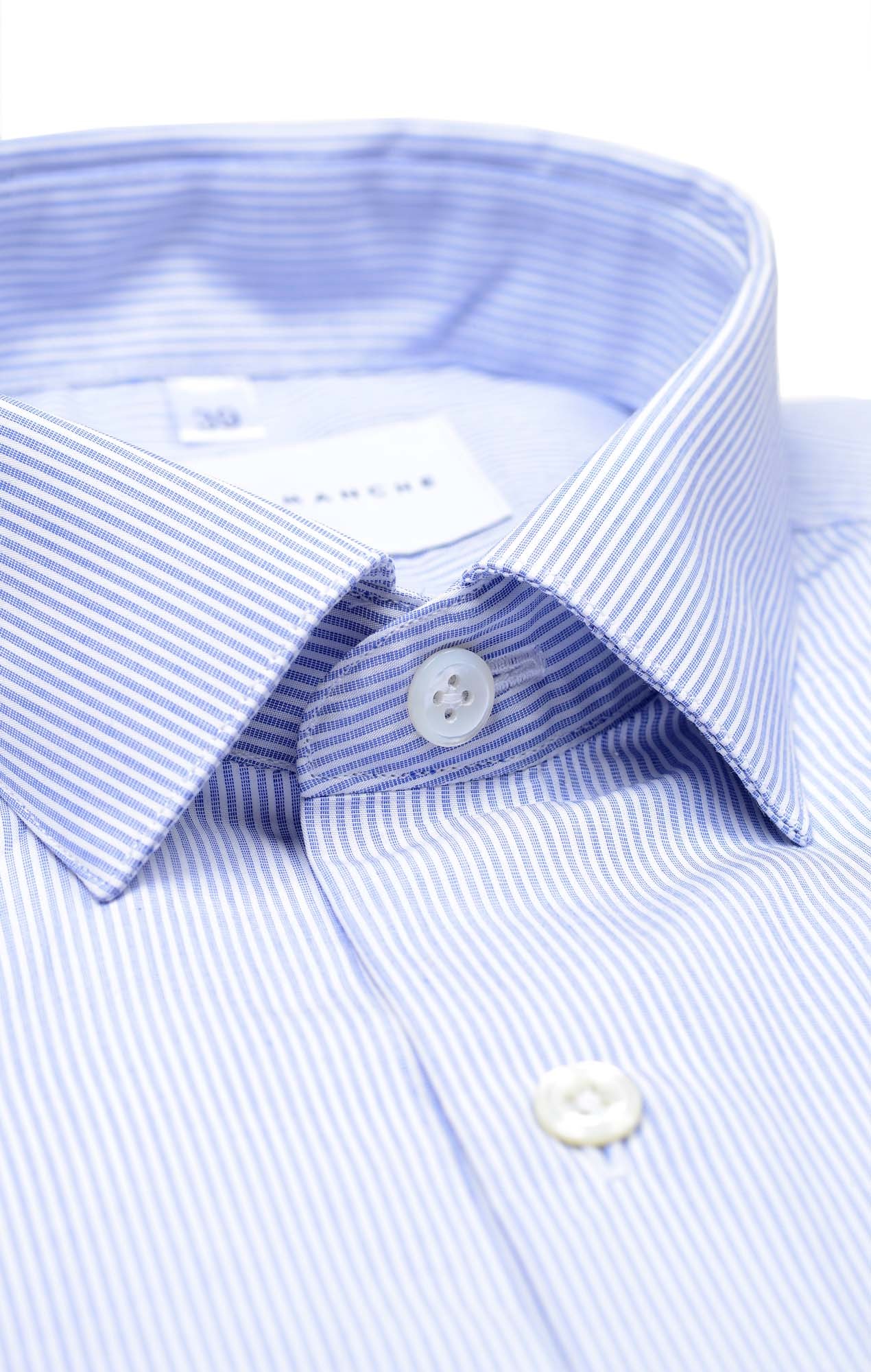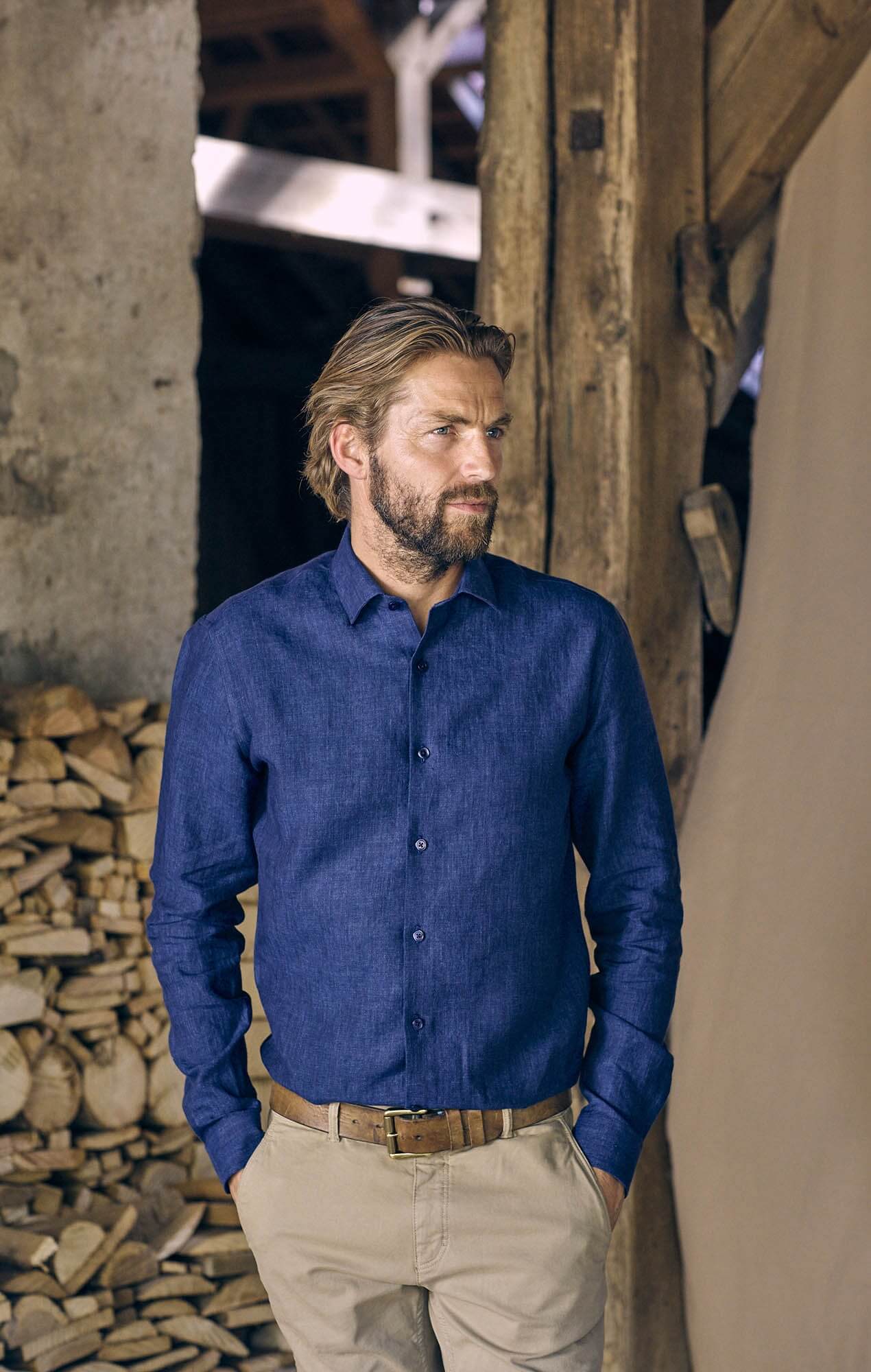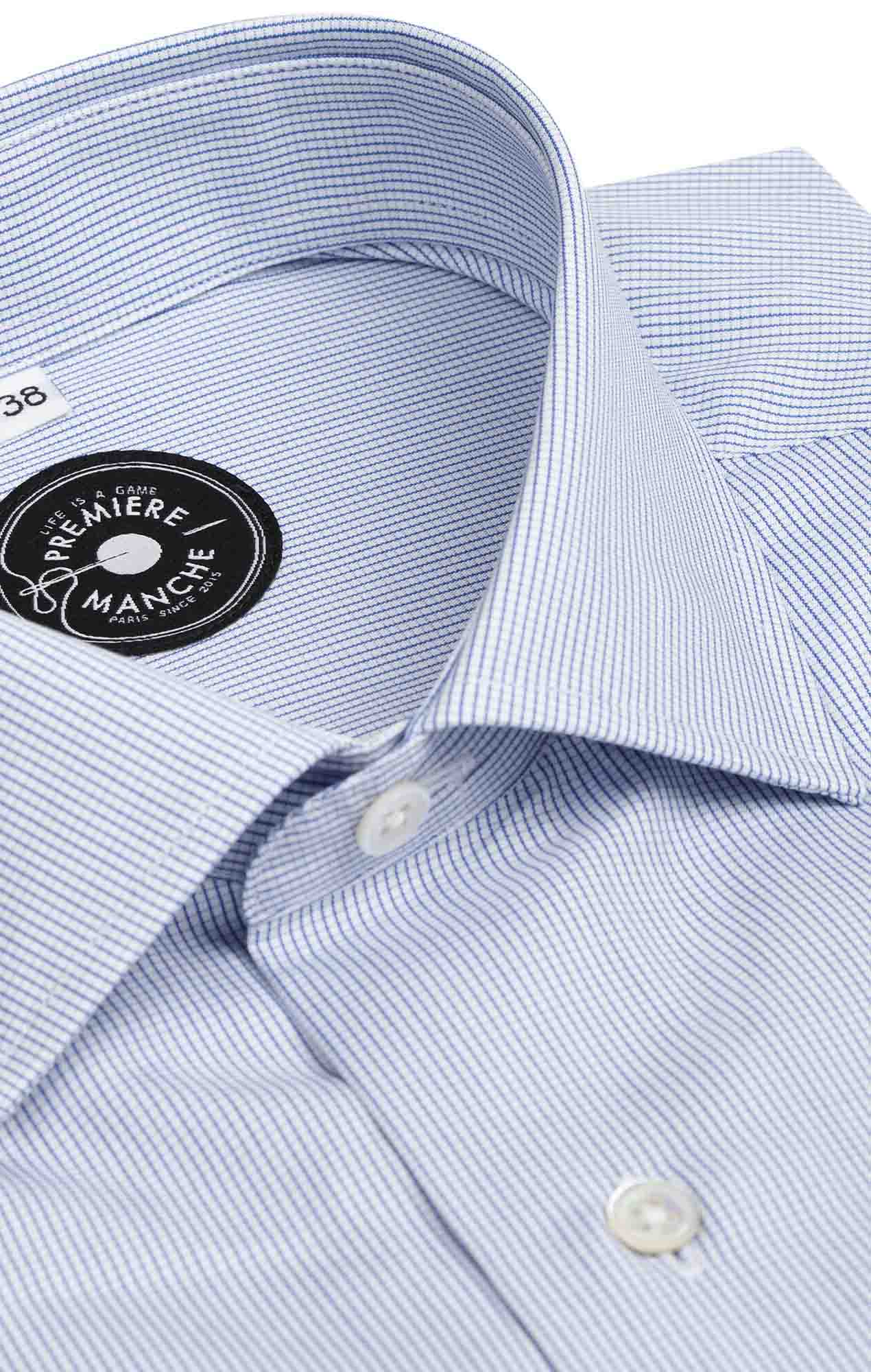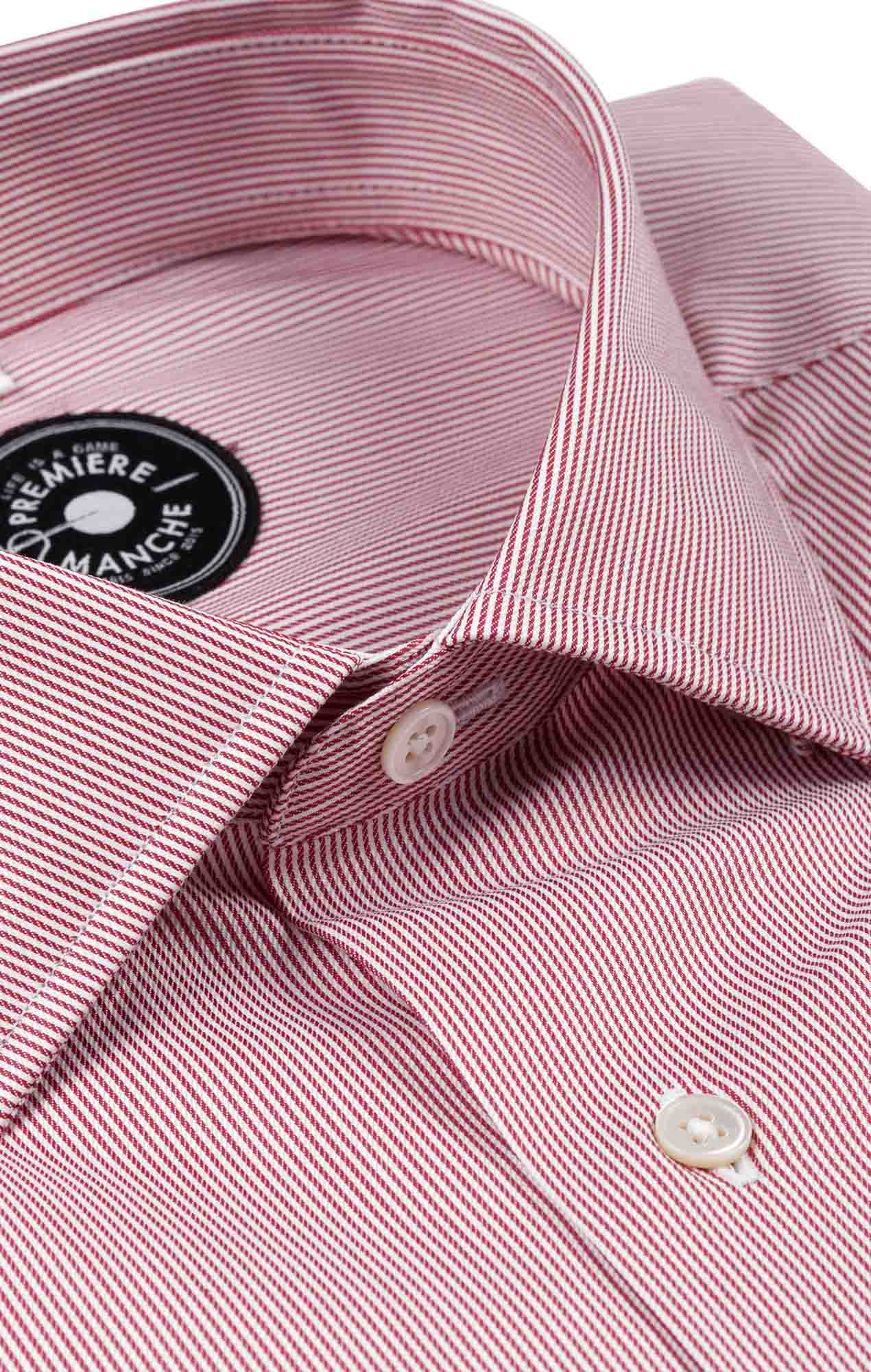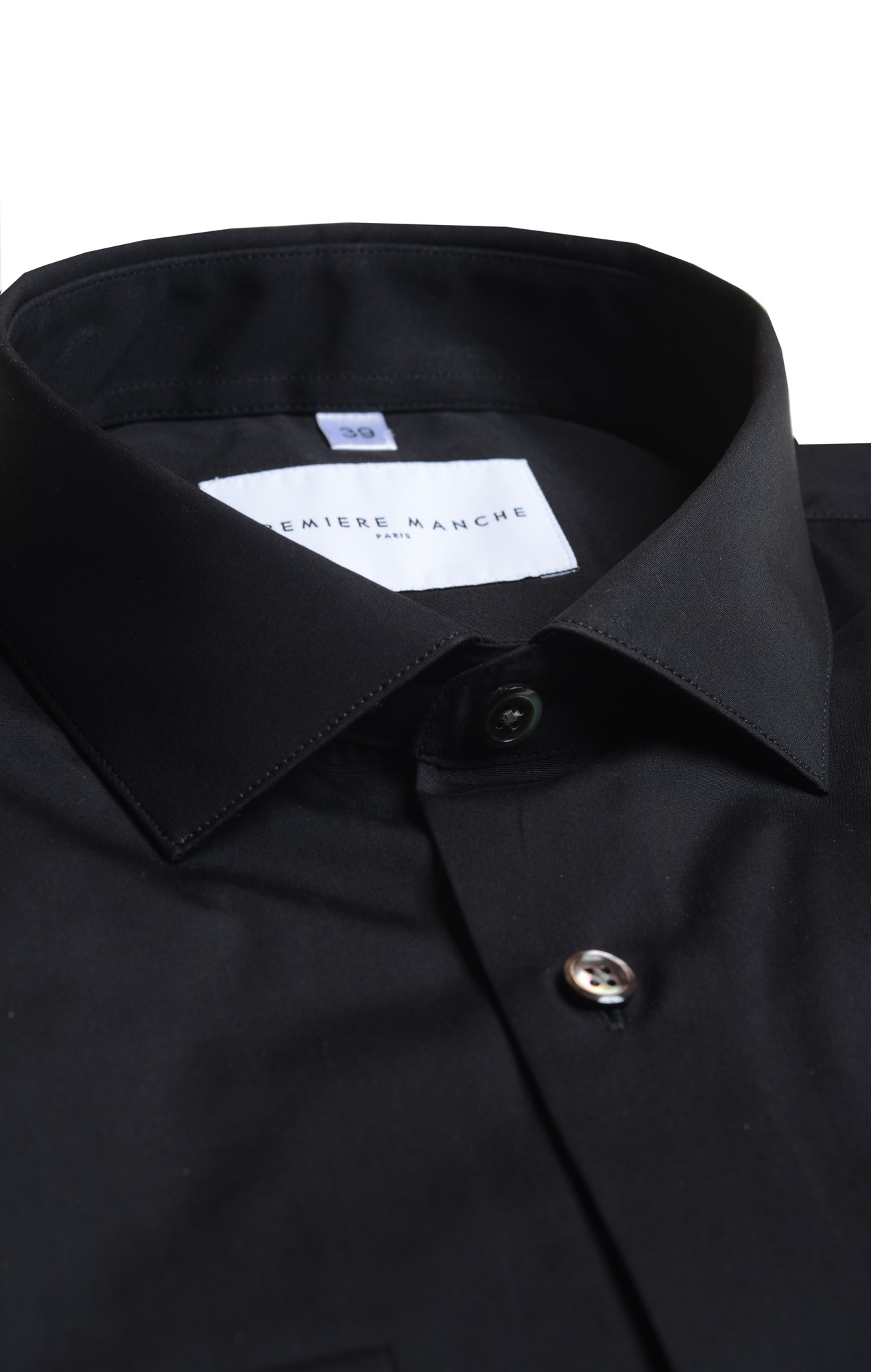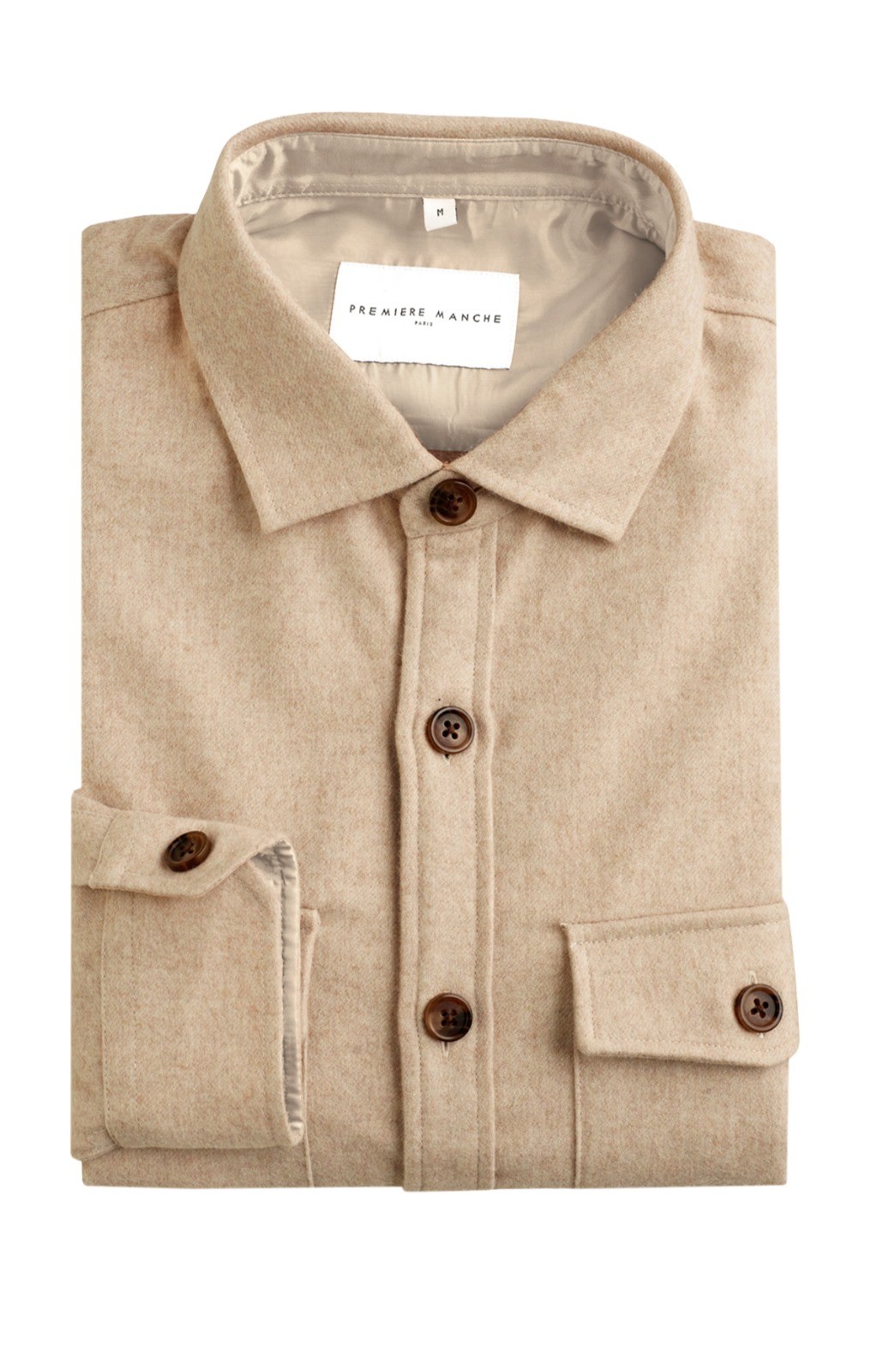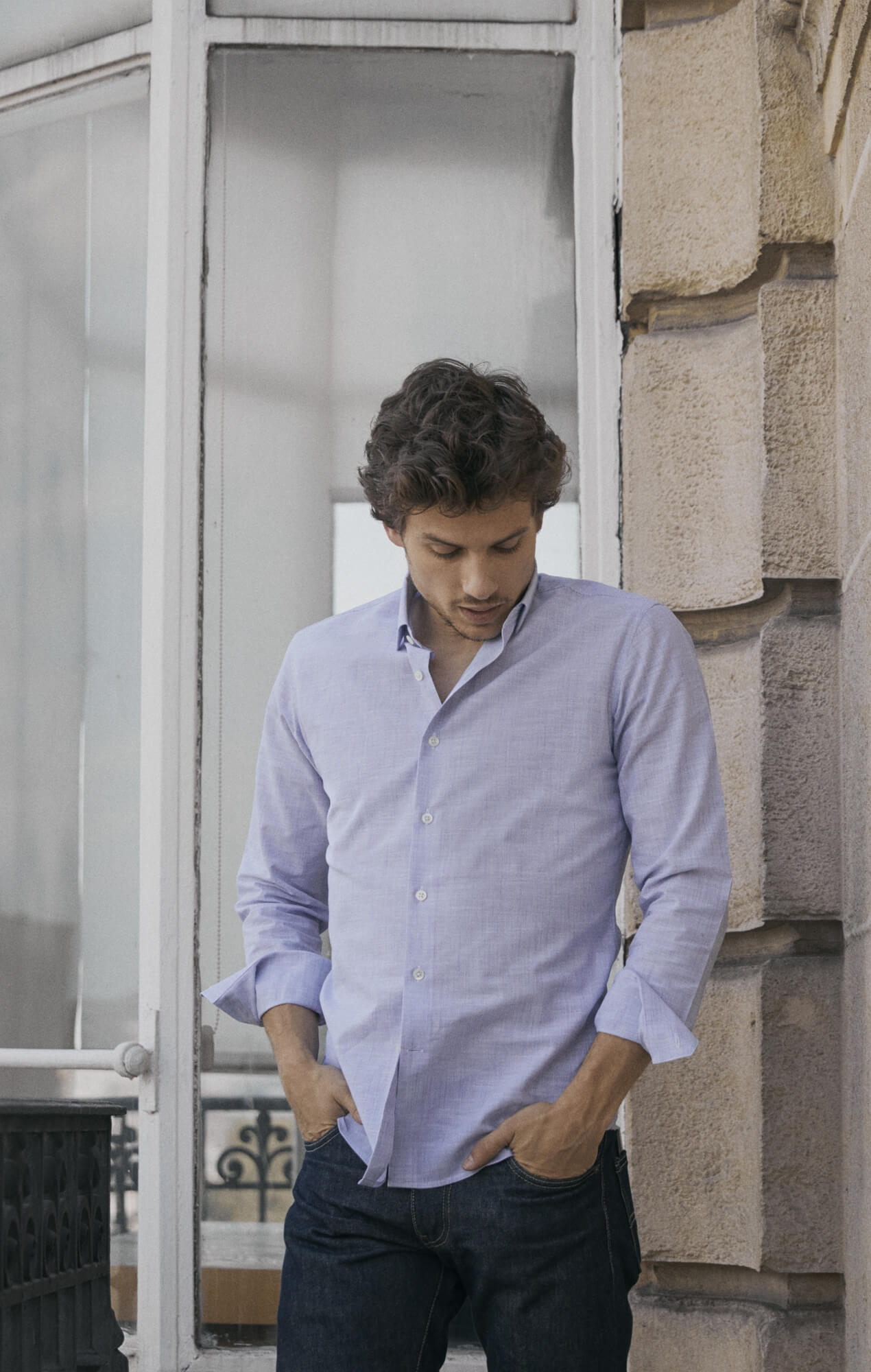- Language:
- Account
Purchase a gift voucher
Filters
Shirts
Find our complete collection of shirts for the office, from the simplest to the most dressy, with and without musketeer handles, cut-away collar or short collar. At Première Manche, we first make formal shirts with a slightly fitted cut and classic materials : Among the classic materials, poplin, oxford, twill, pinpoint, end-on-end, herringbone and dobby. What makes a shirt beautiful is first of all its texture and then the characteristics of each texture. The texture ranges from the simplest (poplin the most neutral, flat and basic fabric) to the most visible herringbone or twill which can have a very visible texture. But at Première Manche, we also make casual shirts that are perfect for all your outings, for holidays and weekends. If you are looking for original materials, fabrics that you enjoy bringing out year after year and timeless basics, then you have come to the right place.
Subcategories
- ID : 228
- ID : 74
- ID : 172
- ID : 184
- ID : 127
- ID : 71
- ID : 231
- ID : 125
- ID : 194
- ID : 230
- ID : 173
- ID : 198
- ID : 64
- ID : 168
- ID : 123
- ID : 85
- ID : 229
- ID : 130
- ID : 169
- ID : 188
- ID : 214
- ID : 182
- ID : 129
- ID : 227
- ID : 183
- ID : 191
- ID : 106
- ID : 117
- ID : 72
- ID : 197
- ID : 175
- ID : 177
- ID : 181
- ID : 170
- ID : 113
- ID : 190
- ID : 97
- ID : 76
- ID : 81
- ID : 86
- ID : 75
- ID : 185
- ID : 70
- ID : 122
- ID : 87
- ID : 103
- ID : 67
- ID : 104
- ID : 174
- ID : 80
- ID : 208
- ID : 209
- ID : 210
- ID : 211
- ID : 212
- ID : 180
- ID : 213
- ID : 89
- ID : 186
- ID : 226
- ID : 196
- ID : 98
- ID : 96
- ID : 90
- ID : 195
- ID : 193
- ID : 43
- ID : 84
- ID : 192
- ID : 238
- ID : 247
- ID : 248
- ID : 249
- ID : 250
- ID : 259
- ID : 272
- ID : 279
- ID : 280
- ID : 281
- ID : 101
- ID : 102
1. What is poplin?
Poplin is the queen of shirting materials, if you had to have only one shirt in your wardrobe it would certainly be a beautiful poplin. Nevertheless, poplin has two main flaws: the first is that if it is white, it must be thick so as not to be transparent and many brands still offer transparent poplin shirts. The second defect is that a poplin that is not treated with chemical products wrinkles easily and you have to iron it after washing.
2. What is Twill?
Twill, also called twill in French, is characterized by the presence of diagonal streaks when looking at the fabric closely. These streaks are more or less visible depending on the desired effect. The main advantage of twill is that it wrinkles little, and that it is often slightly thicker than poplin shirts, giving the shirt a better fit.
3. What is Oxford?
Oxford is a fabric that is made with intersecting threads giving a grainy effect to the fabric. Less precise than poplin, Oxford is woven with a white-colored warp yarn. Originally from the English city of the same name, the Oxford was popularized in France in the early 80s by a famous Polo brand which made it the casual fabric par excellence.
4. End to end, what is it?
Fil à fil is simply a poplin fabric on which we have alternated a colored thread and a white thread. Visually, the fabric as a whole is slightly lighter than without these white threads and has a mottled appearance. It has the same characteristics as poplin, its advantage is precisely this mottled effect. Note: a white end-on-end is a white poplin.
5. PinPoint, what is it?
Pinpoint is a fabric very similar to Oxford except that it is characterized by the fact that the weft thread passes under two warp threads. Up close, the pinpoint looks like micro squares lined up next to each other while the oxford looks like micro dots lined up. Visually, pinpoint is thinner than Oxford, and the fabric has more hold. It is a fabric that creases little.
6. The chevron, what is it?
The chevron, also known as herringbone pattern, is a fabric which is characterized by alternating V-shaped micro streaks. Technically, it is a twill fabric (twill) on which the streaks are oriented alternately to the right or to the LEFT. The rafter sticks can be more or less visible. Above a length of 1cm, the chevron is considered to be marked, ie the pattern is very visible on the fabric.
All of these fabrics form our range of formal shirts; they are long enough to be tucked into the pants. On each product page you will find all the information and technical characteristics of the fabric.
At Première Manche, we then make casual shirts (also called casual) that will be perfect for everyday life, weekends or outings. More or less light or even very thick, casual fabrics are Oxford (detailed above), denim (or jeans), flannel, chambray or seersucker. Among the casual shirts, you will find all styles: lumberjack style, simple style, student style, American style.
1. What is denim?
Denim, a contraction of "de Nîmes" (from the city of Nîmes) is a fabric characterized by a very tight weave on which the weft thread is interwoven at 90° with the warp threads. The warp thread being dyed blue and the weft thread being ecru or white. The result is a fabric with slightly visible diagonal micro lines characteristic of twill (or twill). Denim is the characteristic fabric of jeans. For shirts, the principle is the same except that the fabric is less thick.
2. Chambray, what is it?
Chambray is a characteristic fabric whose warp is dyed indigo and the weft is white. This results in a slightly mottled effect close to denim but often finer than denim because there is no twill effect on the chambray.
3. What is flannel?
Flannel is a fabric originally made of wool, loosely packed, soft. In the case of a shirt, the flannel is a cotton on which the rather thick thread of the cotton has been scraped in order to bring out the threads to give a fluffy side to the fabric. It is a very soft fabric, reserved for warm winter shirts.
CHARACTERISTICS OF A BEAUTIFUL SHIRT
For each of these fabrics and beyond the characteristics specific to each material, there are two main elements to take into account when buying a shirt.
A. Does the weight of a shirt matter?
Yes, the weight of a shirt is characteristic of the quality of a shirt. Cotton, the basic material of a shirt, is expensive. The more cotton, the more expensive the fabric will be. For example, the weight of a shirt varies from 80g/m2 to 250g/m2 (beyond this weight, it is an overshirt).
Below 115g/m2, the fabric will appear thin. Even if the cotton used is of very good quality, the fall of the shirt will be less good than on a thicker and more compact fabric.
B. What is the titration of a shirt?
These are indications intended to know the quality of the cotton used to make the shirt. It is characterized by a number varying from 20 to 250 for the warp thread and the weft thread. The higher this number, the higher the quality of the cotton. Technically, this figure represents the number of meters of thread that could be woven with 1 kg of cotton. For example, a fabric of 100/1 x 100/1 means that with 1 kg of the warp yarn we could extend the yarn over 100 meters. From 120, the fabric is of very good quality but the higher the count, the more easily the fabric will crease, even if they remain very pleasant to wear (cotton will be softer). Ready-to-wear generally uses a count of between 80 and 100. The second number /1 or /2 indicates the number of threads used per warp or weft. When it is indicated /2 the thread is doubled before being woven, we then speak of double twisted fabric. There is also triple twist that is rarely found in ready-to-wear shirts.
On this section, you can find all our fabrics. Take inspiration from the technical characteristics of our fabrics to find the perfect shirt!
SHIRT COLLARS
On our shirts, beyond the technical characteristics and the textures of the fabrics, come the options specific to each shirt and in the first place, the shirt collar.
There are 3 shirt collars: the French collar first, the one whose points are the tightest. Then comes the cut-away collar whose points are widely spaced and go towards the back. With us, the majority of collars have hidden buttons. Halfway between the French collar and the cut-away collar, we find the Italian collar which is well proportioned and suitable for any type of face. For special occasions, the American collar or buttoned collar (button-down) has two buttons to flatten the points and the officer collar does not have a point at all.







